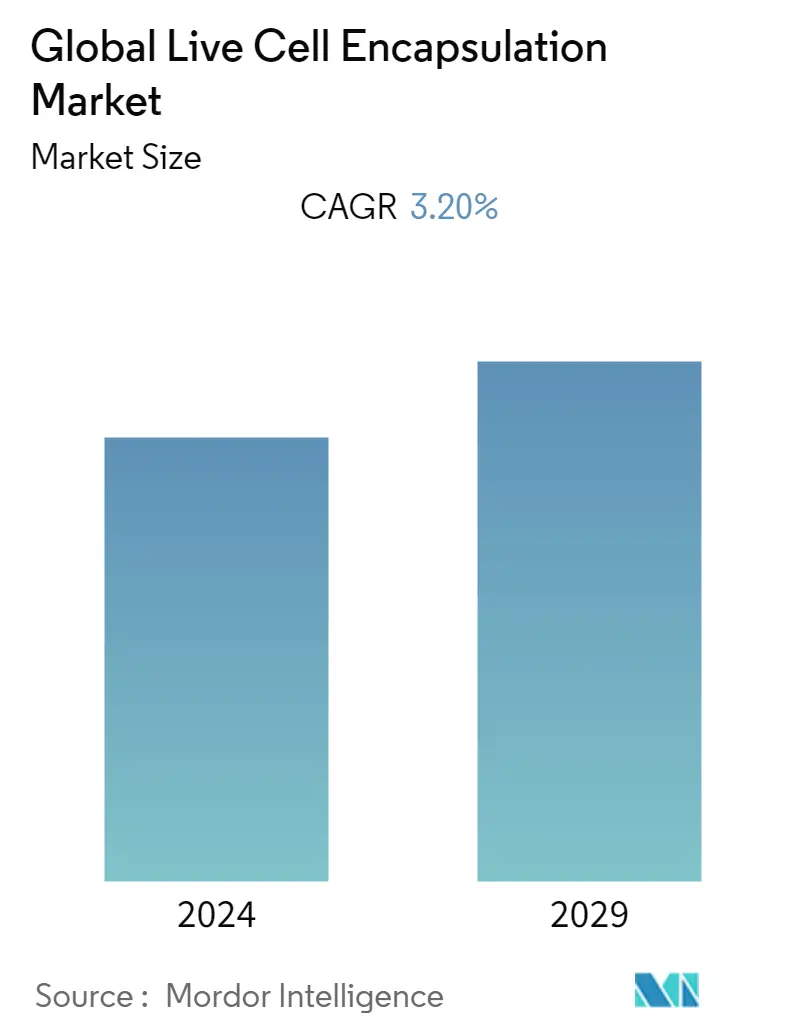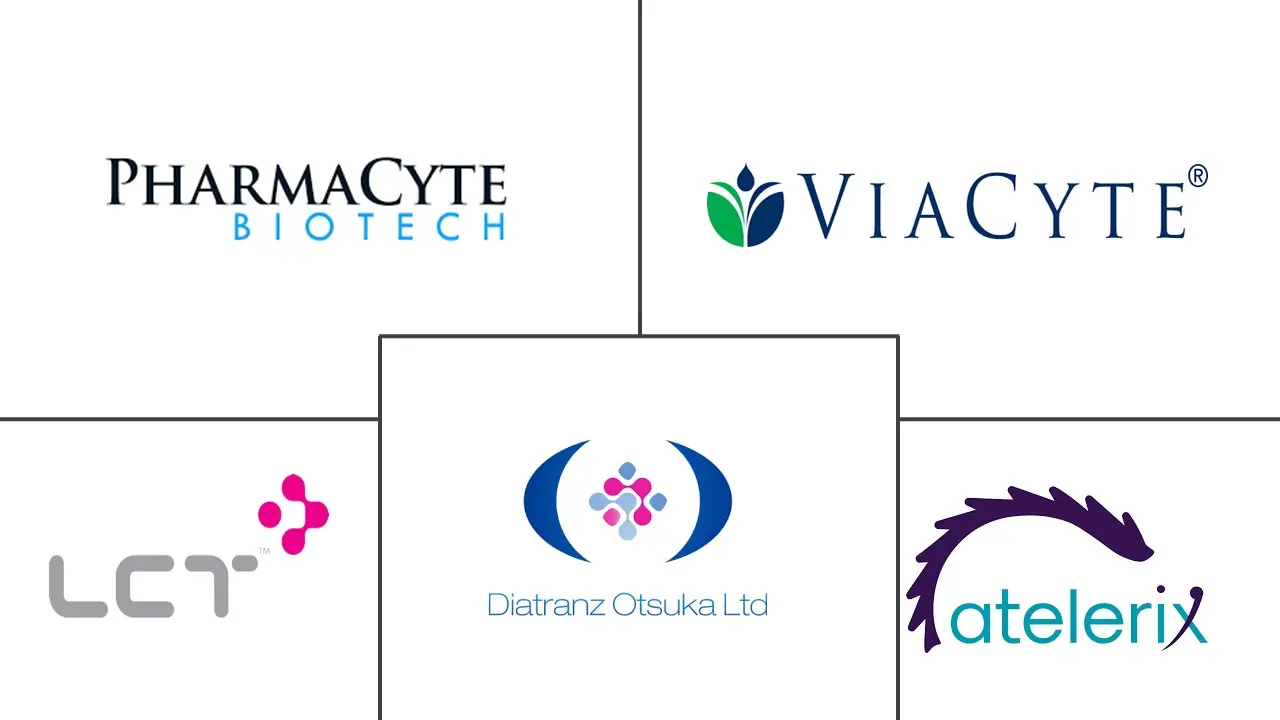Market Size of Global Live Cell Encapsulation Industry

| Study Period | 2019 - 2029 |
| Base Year For Estimation | 2023 |
| Forecast Data Period | 2024 - 2029 |
| CAGR | 3.20 % |
| Fastest Growing Market | Asia Pacific |
| Largest Market | North America |
Major Players
*Disclaimer: Major Players sorted in no particular order |
Need a report that reflects how COVID-19 has impacted this market and its growth?
Live Cell Encapsulation Market Analysis
The live-cell encapsulation market is expected to increase with a CAGR of nearly 3.2% during the forecast period.
The Live-cell encapsulation market was significantly impacted by COVID-19. However, various COVID-19 vaccines are RNA encapsulated, impacting market growth over the pandemic period. For instance, according to the study published in the Journal of Virus Research in October 2021, 1273 mRNA is a vaccine made up of synthetic mRNA encapsulated in lipid nanoparticles (LNPs) that codes for SARS-full-length, CoV-2's pre-fusion stabilized spike protein. Additionally, in May 2021, Moderna and the Vaccine Research Centre worked on an mRNA-based vaccine candidate encapsulating the mRNA in lipid nanoparticles, while Codagenix worked on a live attenuated viral vaccine in collaboration with the Serum Institute of India. Thus, the use of live cell encapsulation procedures in the development of COVID-19 treatment therapies during the pandemic had a notable impact on the market growth. In addition, the demand for live cell encapsulation is expected to remain intact due to the increasing focus on developing treatment therapies against the mutant strain of SARS-CoV-2, fueling the market's growth over the forecast period.
The major factors, such as increasing research programs to establish the clinical efficacy of the cell encapsulation process, are expected to boost market growth. The rising application of live cell encapsulation in developing treatment therapies for major chronic diseases like diabetes, cancers, autoimmune diseases, etc., is also expected to contribute to the market's growth over the forecast period. For instance, according to the study published in the NGP Asia Material in May 2022, blood glucose levels and body weights improved with live cell porous microcapsules encasing cells. These characteristics suggest that porous microcapsules encasing cells are effective in treating diabetes, and researchers believe that because of their superior capabilities, this method will be widely used in the clinic. Thus, the efficacy of live cell encapsulation therapy in treating diabetes is expected to drive the demand for live cell encapsulation, thereby boosting the market's growth over the forecast period.
Moreover, the rising diabetes population worldwide is expected to drive the demand for live cell encapsulation for the development of innovative therapies, thereby contributing to the market's growth. For instance, as per the September 2021 report by the International Diabetes Federation, Diabetes affected approximately 537 million adults (20-79 years) in 2021. By 2030, the total number of diabetes is expected to reach 643 million; by 2045, it will reach 783 million. Thus, the rising number of cases creates a huge opportunity for the market player to bring the novel live cell encapsulated drug for treating people with diabetes, expected to boost the market growth.
Furthermore, another major driving factor accrediting the growth of the live-cell encapsulation market is rising public-private investments to fund product development. For instance, in July 2021, Austrianova developed a novel and proprietary technology for encapsulating living mammalian (Cell-in-a-Box) and bacterial (Bac-in-a-Box) cells using cellulose sulfate-based materials received an investment from Real Tech. Such investments in the development of live cell encapsulation are expected to contribute to the market's growth.
However, the high cost of good-quality raw materials and adopting alternative therapies are major factors restraining the market's growth.
